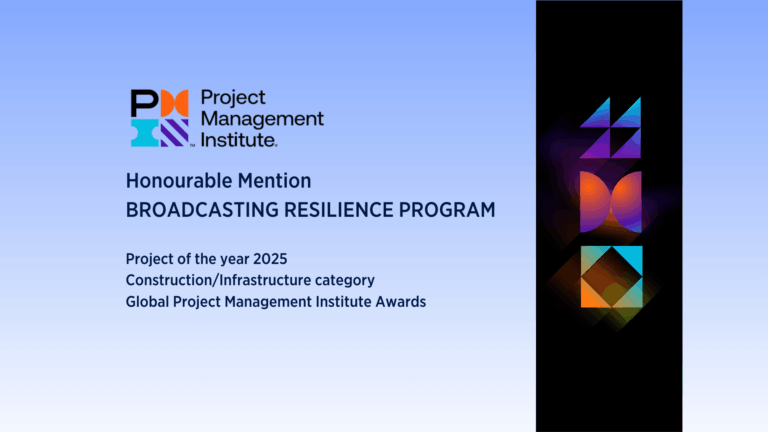Enabling smarter cities and connected communities has been a major focus of the mobile industry in recent years.
5G has the potential to deliver the solutions and services that citizens and authorities desire. To make it happen, there needs to be a concerted effort for greater collaboration between the public and private sectors. Mobile World Live sat down recently with Brendan O’Reilly, Group CTO of BAI Communications, to find out more.
Q – Your latest report, ‘The building blocks of smarter, more connected communities: Smart communities report 2022’ surveyed 200 enterprise and venue IT experts and senior decision makers to understand the network infrastructure needed to enable smart community transformations. To start off, what is a smart community? Can you provide some real-world examples?
A smart community is one that uses state-of-the-art technology and real-time data analytics to deliver personalised, more intuitive services and experiences that help improve a wealth of factors, from health and safety to sustainability. Smart communities help to reduce the digital divide and enhance people’s lives. They are the building blocks of smart cities. The entire ecosystem of a smart community is enabled and underpinned by high-speed connectivity.
Transit and transportation are focus areas in the development of smart communities. BAI works with transport authorities around the world. We delivered a small cell network on the London Underground that all UK mobile network operators (MNOs) share. In Toronto, Canada, we helped the transit authority avoid overcrowding during COVID, and in New York, BAI has a long standing relationship with the transit authority that enables the MNOs to provide ubiquitous coverage in over 280 subway stations.
We have a major undertaking in Sunderland, UK, delivering a new 5G network that will help realise the city council’s ambition to become the UK’s most advanced smart city. In social care, we’re enabling IoT sensors indoors to help enhance the quality of life for people who want to live independently. We have also enabled smart waste management solutions and smart street lighting for the city.
Q – Who are the key stakeholders in a smart community, and what roles do they play in making it a reality?
To build a smart community, you would need collaboration between the public sector, infrastructure providers, network service providers, and private businesses.
I think everyone realises that a smart community cannot be delivered by a single organisation. Our study revealed 71% of enterprise decision makers believe in investing in public connectivity and 40% said that there should be financing, and investment provided to help deliver those smart communities.
We are big believers that private-public collaboration enables stakeholders to leverage existing public infrastructure to help drive efficiency, alleviate budget constraints, deliver ubiquitous connectivity, and enable high quality services in a secure way.
Sunderland is a great example. A group of council leaders wanted to work with a partner that aligned with their vision of delivering services that benefitted everyone, who shared their aspiration for the city, and who understood that there would need to be a strong public/private partnership to accomplish this.
It is much more than a technology and financial partnership; it is a meeting of minds. Sunderland City Council has a very forward-thinking approach. The greatest thing about that whole process is that from day one we have been discussing what we could achieve next. We are proud to share that we have contributed to the creation of over 100 jobs and the University of Sunderland is now set to become one of the UK’s first 5G-enabled universities, putting it at the forefront of smart education. These are just some early results and I’m excited for BAI to continue playing a big part in realising Sunderland’s smart precinct ambitions.
Q – Your research highlighted some barriers that are holding organisations back from making the infrastructure investments that are both necessary and beneficial to building smart communities – as an example, 70% of respondents plan to upgrade to 5G but many are taking a ‘wait and leap’ approach. Can you share the reasons why?
There are a couple of major barriers that we see holding organisations back from making important infrastructure upgrades: the majority of respondents (90%) said that the network infrastructure in place today does not allow them to upgrade to 5G; and 87% said there is a lack of skills and knowledge among public organisations with regards to the potential for 5G.
We are seeing MNOs continuing to build out 5G at great rates, but there are always going to be places that they cannot reach. It was the same with 4G and 3G, and even 2G. There are always gaps that make less financial sense for the operators to fill. This is where a partner like BAI can come in and build a neutral host system that all MNOs can join. They would not have to build their own network and can benefit from a cost efficiency point of view.
With the wait and leap strategy, organisations would still have to deal with maintaining older networks and that comes with its own set of challenges and costs. Organisations who take that approach will find themselves lagging when it comes to the availability of technology.
We are big believers in building for the future and making sure that upgrading paths are straightforward and cost effective. With 5G on the horizon, the role of the neutral host player is vital to ensure that investments into networks are commercially viable.
Q – The research also found that amongst all technologies, the neutral host model will play a key role in helping businesses achieve their connectivity goals. How can neutral hosts fill the gap in urban areas and enable smarter communities? What’s the role of MNOs in this model?
MNOs play a crucial role in providing coverage. Neutral hosts are complementary partners whose role is to help provide vastly improved connections for MNO’s customers and help them reach the parts their networks can’t. At BAI, we build networks that MNOs use, and they manage the customer experience.
If we take the Transport for London project in the UK, it would not have been possible for all four operators to build four different systems down in the tunnels. There’s just not enough room and so it had to be built once, but it had to be built for all four operators.
The role of the neutral host provider is to become a trusted partner of the operators. If we’re viewed as a partner who’s enhancing their business, helping them get to the areas that they can’t, ensuring that they provide a great customer service, then they’ll want to work with us.
In future, we are not going to see a single neutral network for an entire country or region, but we will see dense urban areas and transit systems being served by single networks. Delivering the promise of 5G will require thousands or tens of thousands of small cells and building those individually makes little economic sense. Whereas working with a neutral network that can provide access to those small cells with the connectivity that’s required, plug and play, with not a huge number of overheads in terms of planning, makes it quick, simple and easy to use.
Q – Bringing together all the technologies while upgrading network infrastructure can be challenging. How can we ensure a coordinated effort between various stakeholders to build connected and intelligent communities?
The role of the neutral host and all shared infrastructure providers is to establish trust. Trusted partners always know when to take a step back. There are cases where we have told partners, “Look, we’re not the right people to do this. You should step forward and lead on this bit.” At the end of the day, it is all about building trust in the consortium, so that everybody gets the most out of it.
To achieve such outcomes, you would need to work as a team, and an organisation like BAI can pull all those strings together. We pride ourselves in bringing the right partners from both public and private sectors to transform outcomes for the city and local communities.
Q – It’s interesting that 78% of respondents claimed to be innovators and early adopters, but more than half are still operating 4G/LTE networks or below. What do you think accounts for this gap between perception and reality?
5G brings a lot of promise because it is not just another connectivity pipe. If you layer it together with technologies like AI, data analytics and IoT, it has the potential to become one of the greatest enablers for public and private enterprises that we have seen in many decades.
However, 5G is more expensive to deploy than previous generations. You would need more sites to deliver sufficient bandwidth. We are not talking just about a coverage issue; it is also about capacity. Also, operators in some areas are lagging and still rolling out 4G.
The cycle of generations of technology are developing faster, and that’s why neutral hosts are so valuable. We can help solve the financial challenges for MNOs, provide better quality coverage in terms of reach and presence and create more sustainable outcomes for the environment.
Many organisations have aspirations to be early adopters, but overhauling a network requires both time and significant investment. And that is where a company like BAI can really help as our networks are designed with future innovations in mind.
Q – Is there anything else you want to highlight in the report? How can people find this research?
This is an exciting time to be part of this industry. From a shared infrastructure point of view, there is a real opportunity to help shape and create those building blocks of smart communities to deliver tangible outcomes for citizens for many years to come.
From our research, it is clear that there is a huge appetite from people and businesses to adopt 5G technology. As an industry, there are massive opportunities to help make this reality and this can only be done through cross collaboration. To enable smart community transformations, we’ve all got to be open to working with many different parties like government, public, private enterprises, shared infrastructure providers.






